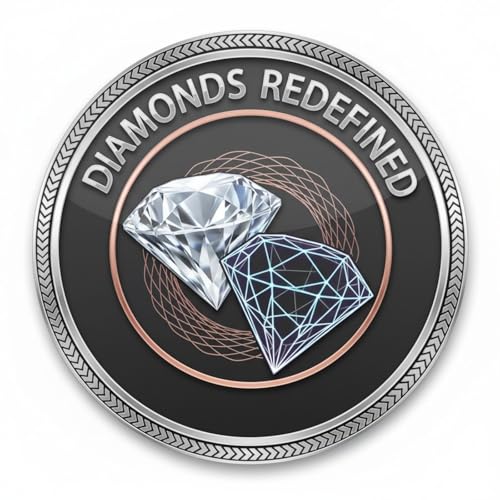
Lab-Grown Diamond Rings in Modern Shapes
Failed to add items
Sorry, we are unable to add the item because your shopping cart is already at capacity.
Add to basket failed.
Please try again later
Add to Wish List failed.
Please try again later
Remove from Wish List failed.
Please try again later
Follow podcast failed
Unfollow podcast failed
-
Narrated by:
-
By:
About this listen
Pear-Shaped Diamonds
The pear shape blends round and marquise cuts into a graceful teardrop. It makes fingers appear longer and looks elegant in both classic north-south or modern east-west settings. Key things to look for include even curves on both sides, a centered tip, and minimal “bow-tie” shadows. Protect the pointed end with a V-prong, and consider halos or slim bands to enhance the look without overwhelming the center stone.
Kite-Shaped Diamonds
Kite cuts feel bold and geometric, catching light in sharp flashes. This shape stands out in solitaires, slim halos, or bezels. Clean, sharp corners and straight edges are essential. Because the tips can take hits, protective prongs or partial bezels help. Pair with plain bands or tapered baguettes to balance the striking outline.
Cushion-Shaped Diamonds
The cushion cut has soft corners and a cozy sparkle. Two main looks exist: chunky facets with bold reflections or crushed-ice facets with a shimmering effect. A well-cut cushion should show brightness across the surface with tidy symmetry. Rounded claws or bezels protect the edges, while fine halos can square the outline and boost the appearance of size.
Oval-Shaped Diamonds
Ovals spread across the finger, often looking larger than their carat weight suggests. They feel refined and versatile, working well in classic or modern settings. Popular ratios range from 1.30 to 1.45, with balanced outlines and even sparkle being the top priorities. Petite prongs or bezels keep the look secure yet elegant.
Pros and Cons of Lab-Grown Diamonds
Pros:
- Bigger size or higher quality for the same price
- Same sparkle and hardness as mined stones
- Traceable sourcing and steady availability
- Easy to match with bands or earrings later
- Resale market is smaller
- Prices may shift as supply grows
- Some buyers still prefer mined stones for tradition
- Environmental claims vary, so ask for certification
Buying and Styling Tips
Put cut first, since it controls sparkle and hides small flaws. Decide on carat size, then balance color and clarity to what looks clean to the eye. Always request IGI or GIA grading for verified quality. Try to view videos of the diamond in both daylight and indoor light before purchase. For daily comfort, choose low settings, secure prongs or bezels, and band widths between 1.6 and 2.0 mm.
Metal choices add personality: yellow gold brings warmth, rose gold adds romance, and platinum or white gold offer a crisp frame. Match the metal to the wearer’s style for the best effect.
Care That Lasts
Remove rings before workouts or strong cleaning. Wash gently with warm water, dish soap, and a soft brush. Have settings checked annually and store pieces separately to avoid scratches.
Final Thoughts
From pears and ovals to cushions and kites, shape is about both style and personality. Pairing a secure, low setting with a well-cut Lab-grown diamond creates a ring that shines brightly, feels comfortable, and holds long-term value. These diamonds offer modern buyers beauty, ethics, and affordability in one timeless package.
No reviews yet
In the spirit of reconciliation, Audible acknowledges the Traditional Custodians of country throughout Australia and their connections to land, sea and community. We pay our respect to their elders past and present and extend that respect to all Aboriginal and Torres Strait Islander peoples today.



